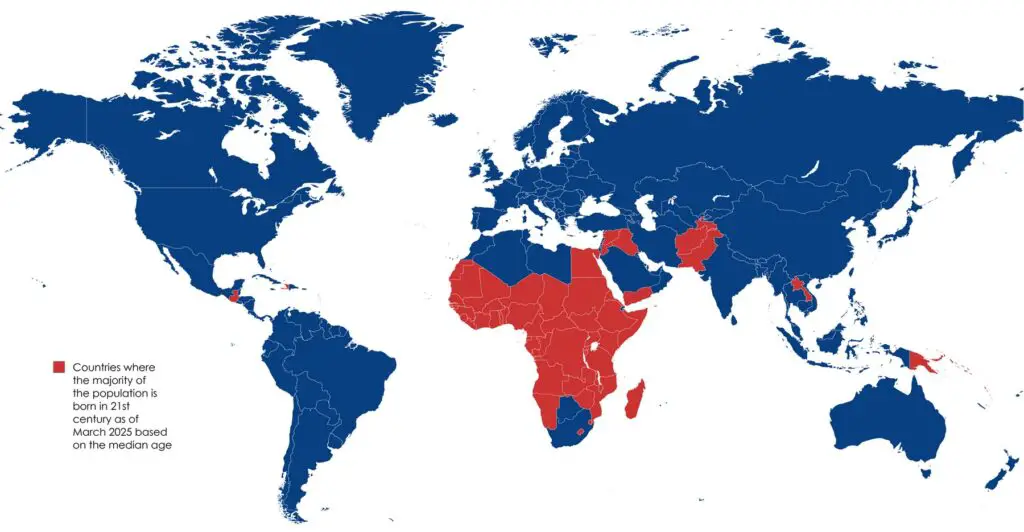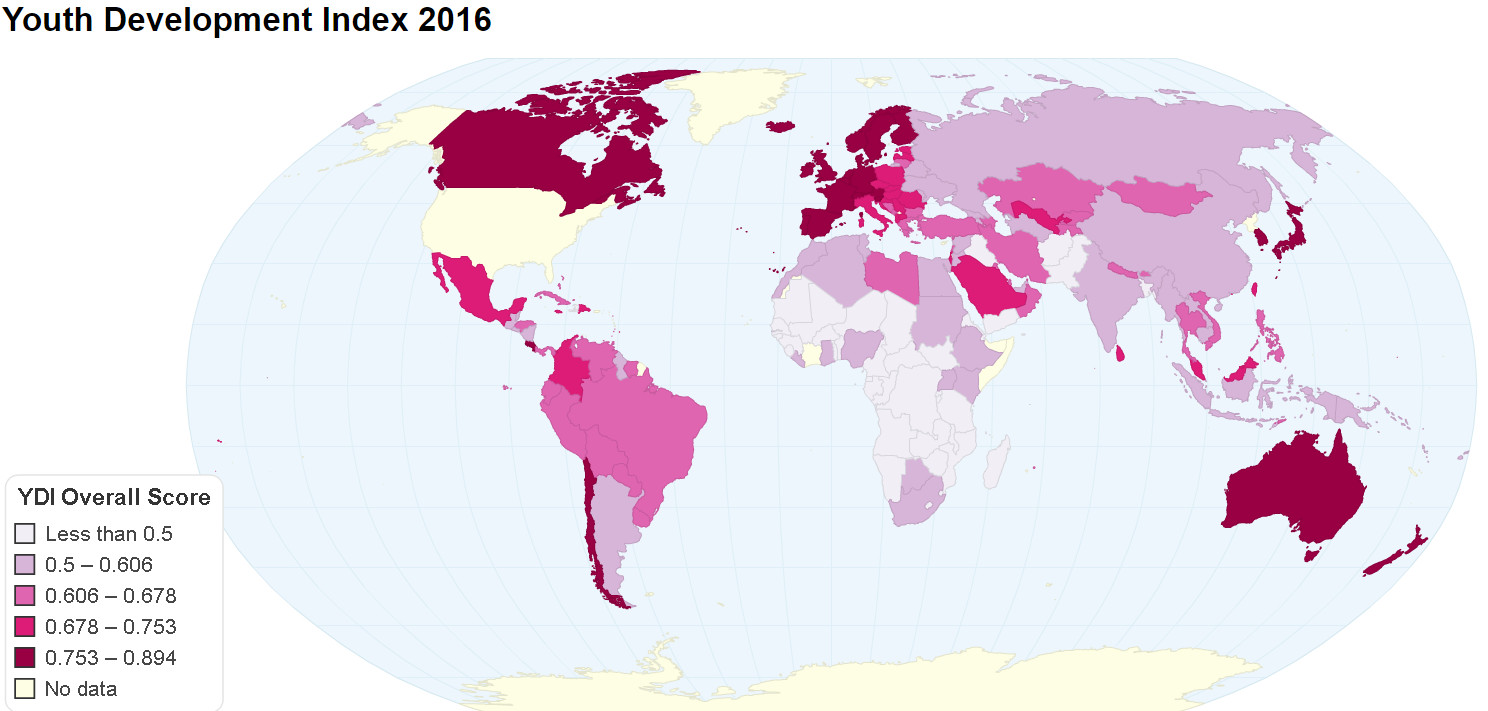A World Map of Youth: Countries Where Most People Were Born in the 21st Century
The world map below, showing countries where most people were born after 2000 hits you differently than typical demographic charts. It sheds light on nations with predominantly young populations, offering insights into global demographic trends.

In several African countries, the median age is remarkably low, indicating that more than half of their populations are under 20 years old. For instanse, Niger’s median age is 15.2 years. Half their population can’t legally drive in most places. Uganda sits at 15.7, Chad at 16.6. These aren’t outliers—they represent a demographic reality across much of sub-Saharan Africa that most of us in developed countries struggle to grasp.
High birth rates plus better child healthcare created this situation. Kids who would have died from preventable diseases thirty years ago are now growing up, starting families, and contributing to their communities. Kenya shows how this evolves – families went from averaging eight children in the 1970s to three today as women gained access to education and career opportunities.
Japan tells the opposite story. Their median age jumped from 22 in 1950 to 48 now. Birth rates dropped to 1.4 children per woman. Rural areas are emptying out. Schools close because there aren’t enough students.
Italy and Germany face similar pressures. Without immigration, Italy’s population could shrink dramatically over the next generation. Empty villages, abandoned farms, entire regions losing their economic base.
Young populations need jobs. Lots of them. Plus schools, infrastructure, healthcare systems that can handle rapid growth. Aging societies need workers – someone has to fill the jobs when baby boomers retire, pay into pension systems, care for elderly relatives.
These demographic maps show tomorrow’s political flashpoints. Where will people migrate when their home countries can’t provide opportunities? Which economies will boom from young workforces? Which will struggle with labor shortages?
The patterns emerging from this data affect everything from international trade to climate policy to social security systems.








